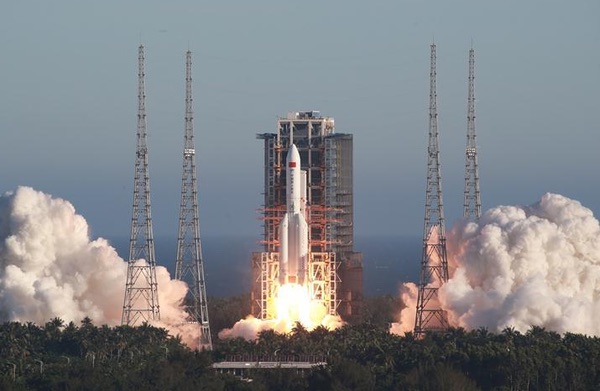Paradigmatic shifts in space?by Namrata Goswami Monday, September 13, 2021
Space policies of China and India: priorities, long-term focuses, and differences China is developing new launch vehicles, spacecraft, and space stations to demonstrate it is a leading nation. (credit: Xinhua)
China is developing new launch vehicles, spacecraft, and space stations to demonstrate it is a leading nation. (credit: Xinhua)Space has animated both China and India since ancient times, with mythology and folklore about what lay up there amongst the stars. Chinese mythology has given us folktales like that of Chang’e the Moon goddess, Tianwen or heavenly questions, and the Yuegong-1 or heavenly palace. For India, the mythology of space can be inferred from such ancient mythical invocations like the Navagraha (nine planets), the folklore around eclipses and the invisible planets, and Rahu and Ketu (astrological connotations), which by 499 AD resulted in mathematical calculations by Aryabhatta, and his study of solar and lunar eclipses. Aryabhatta correctly attributed the brightness of the Moon and planets as reflected sunlight. India’s first satellite that was launched in 1975 was named after him. The seven main stars of the cup shaped Ursa Major were viewed as the seven sages (सप्तर्षि-Saptarishi or saptarṣī) in Indian mythology. In Indian epics like Mahabharata (written on events about 5,000 to 3,000 years ago), topics ranging from philosophy, cosmology, statecraft, and ethics were discussed. Steven R. Weisman, writing in The New York Times on “Many Faces of the Mahabharatha”, specified:
Modern India is a country in which a lawyer and teacher will tell you with certainty that references to the cosmic weapons used by a hero in the Mahabharata intentionally prefigured the space-based Strategic Defense Initiative of President Reagan.
https://www.thespacereview.com/article/4245/1